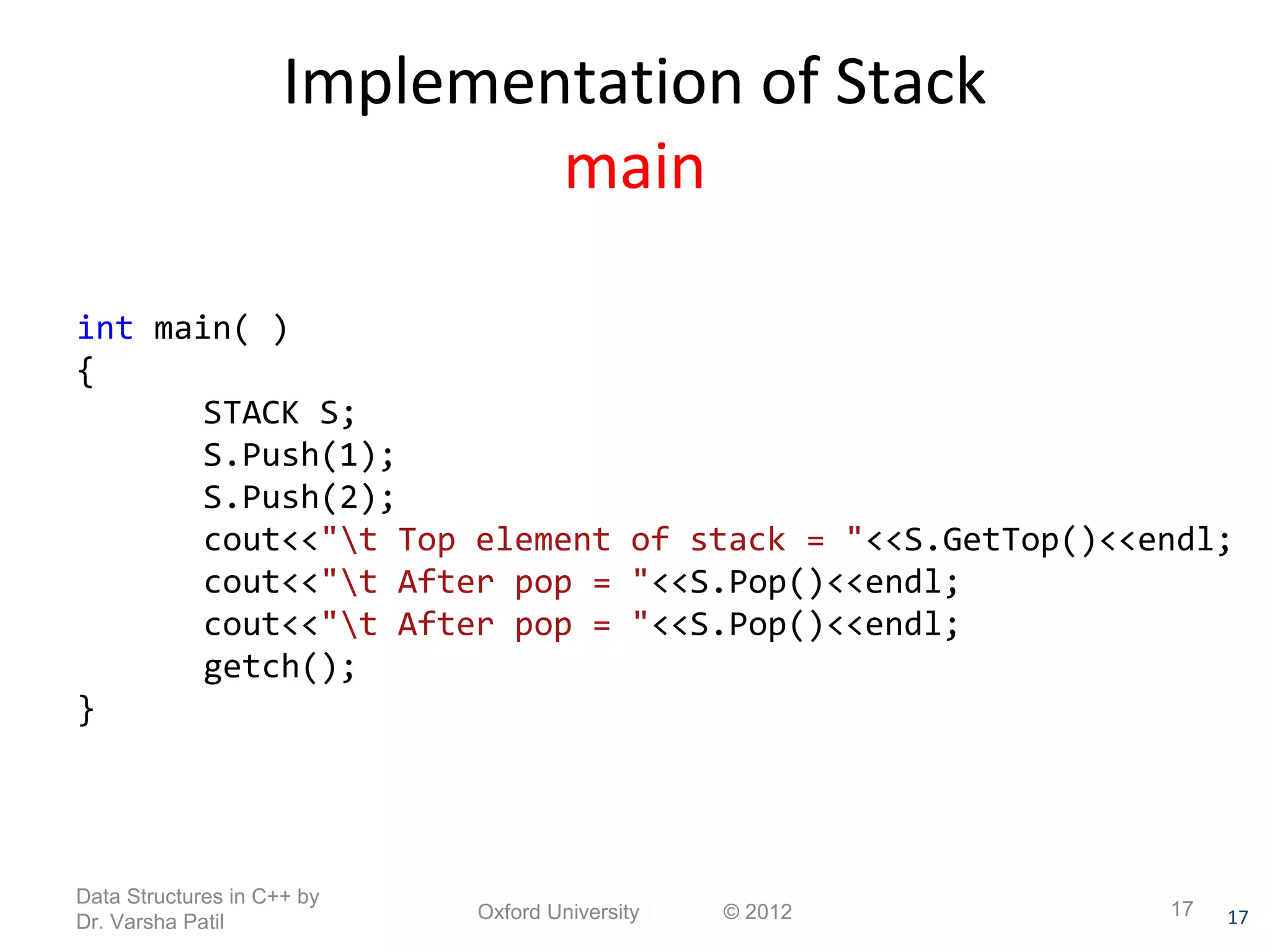The document discusses stacks as a data structure. It defines a stack as a list where all insertions and deletions are made at one end, called the top. Stacks follow the LIFO (last in, first out) principle. The document provides examples of stack implementations using arrays in C++ and describes the basic stack operations like push, pop, peek, and isEmpty. It also gives examples of real-world stacks like stacks of books, chairs, and cups.
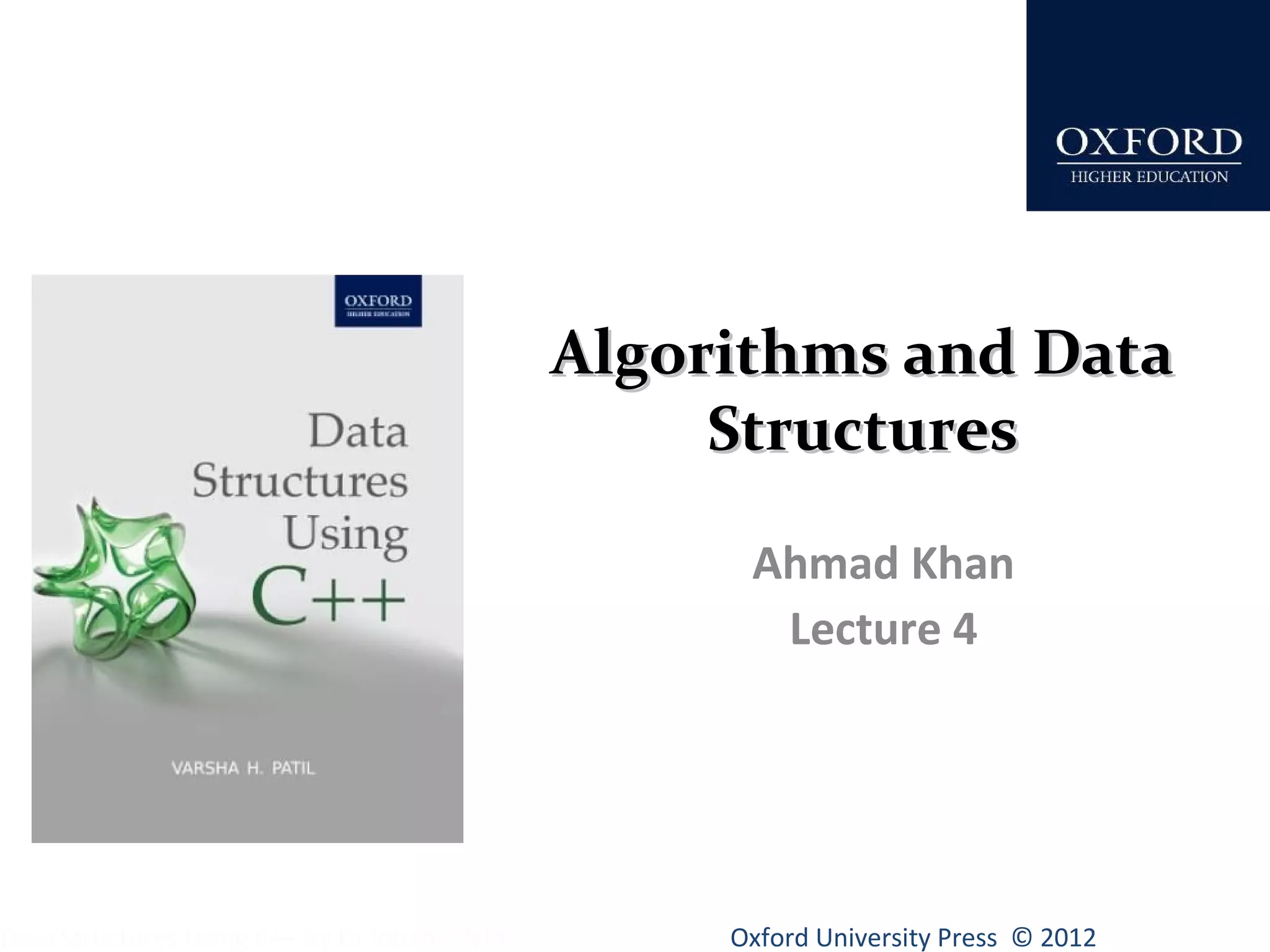
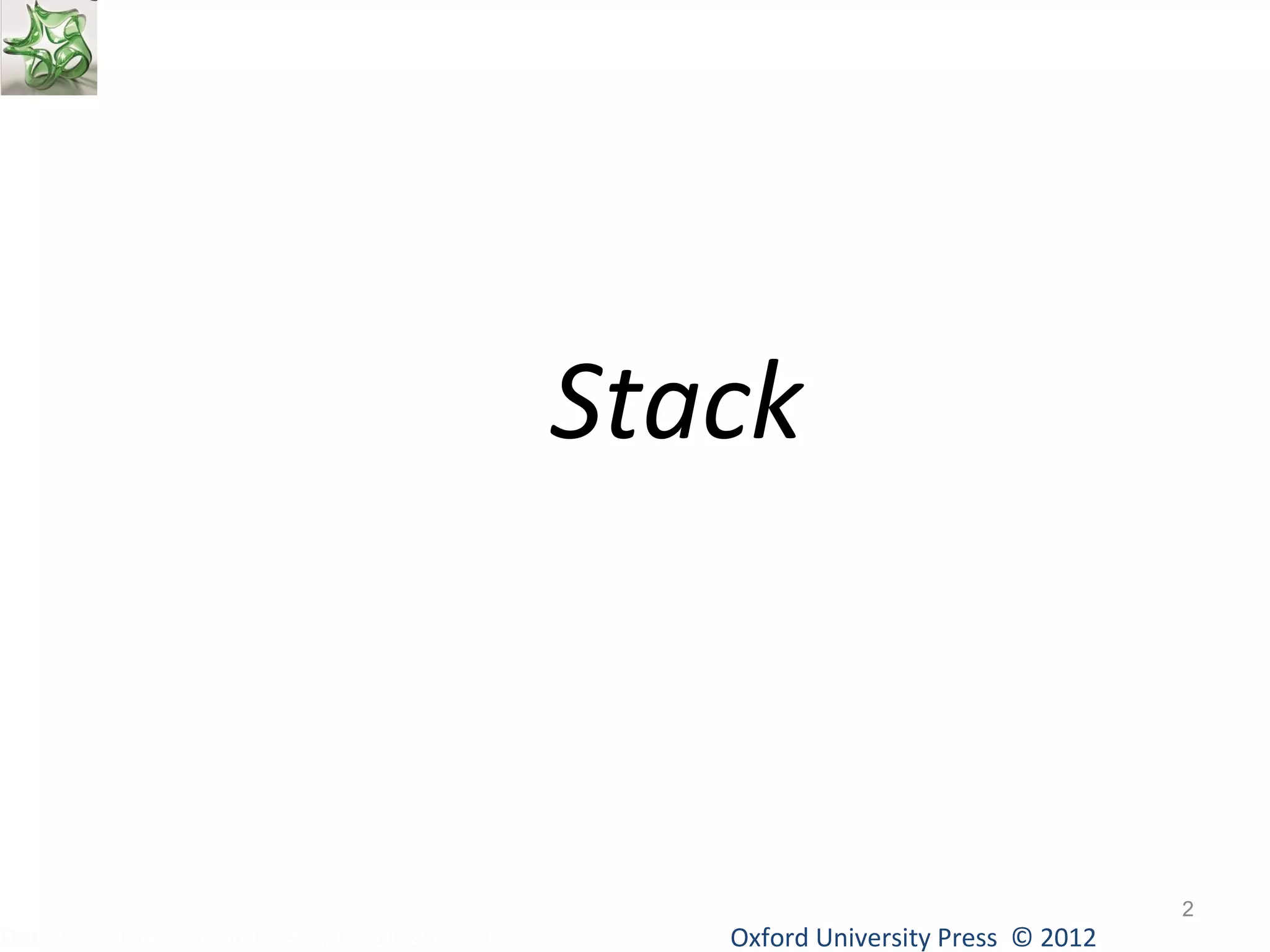
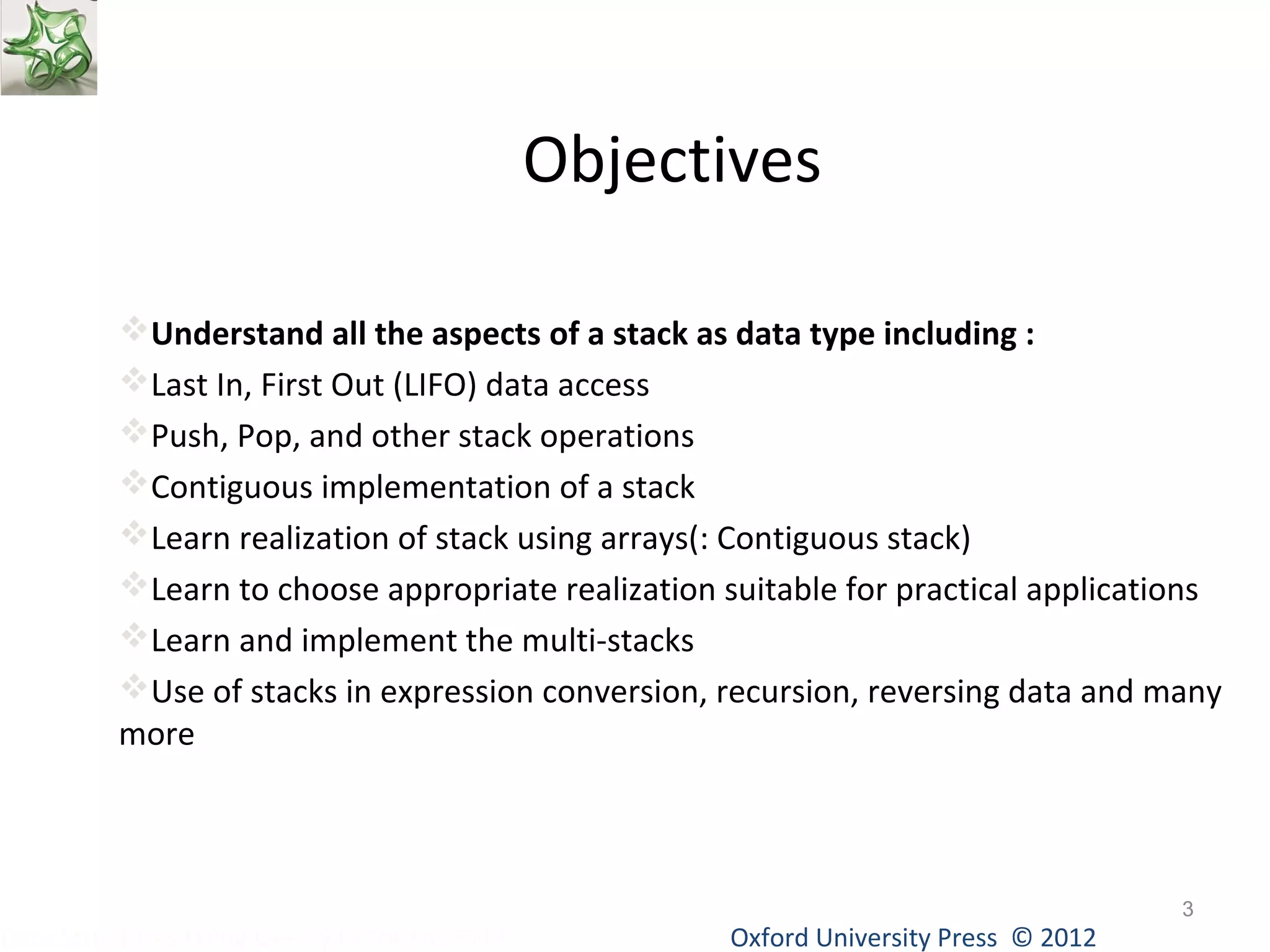
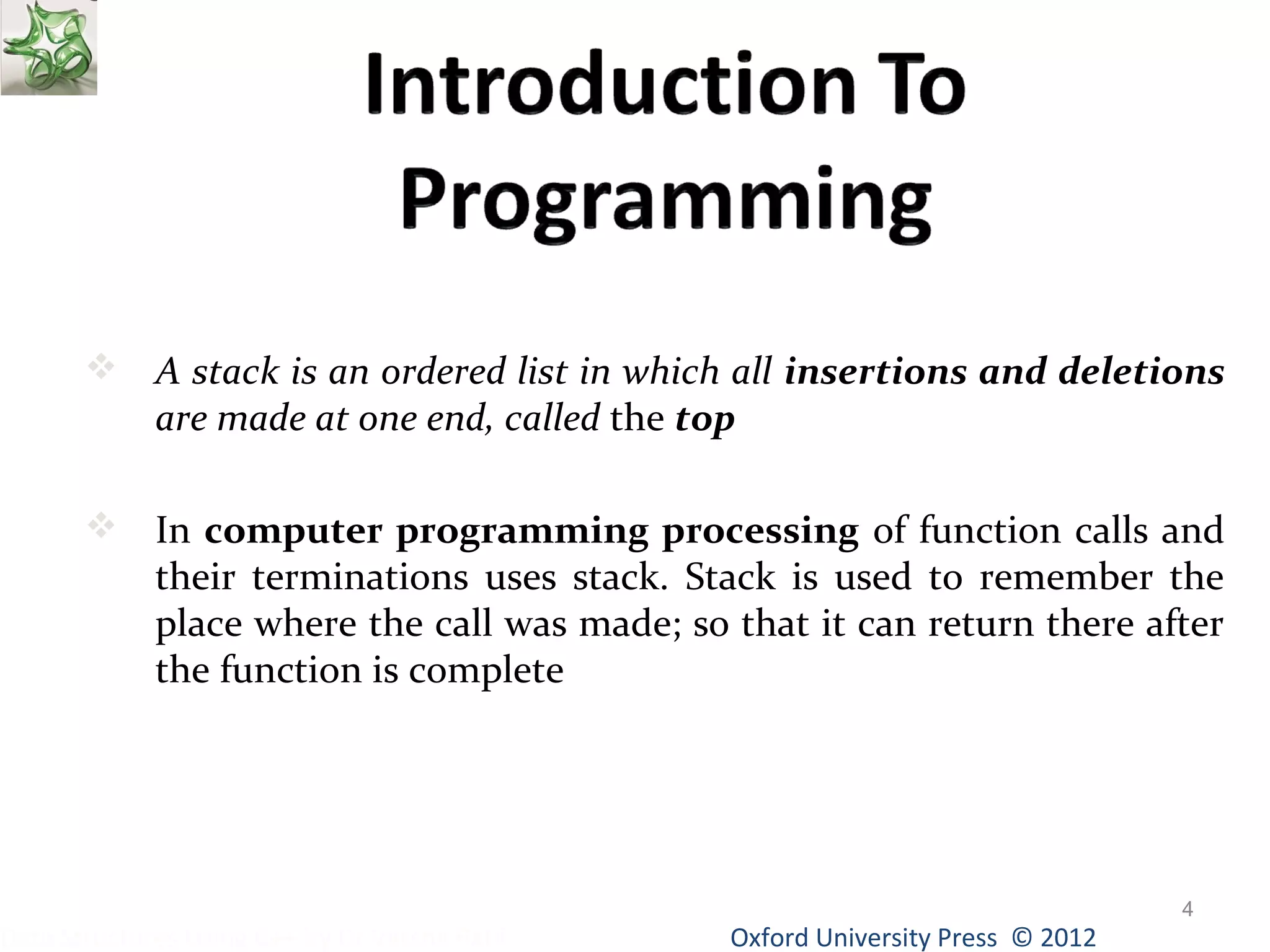
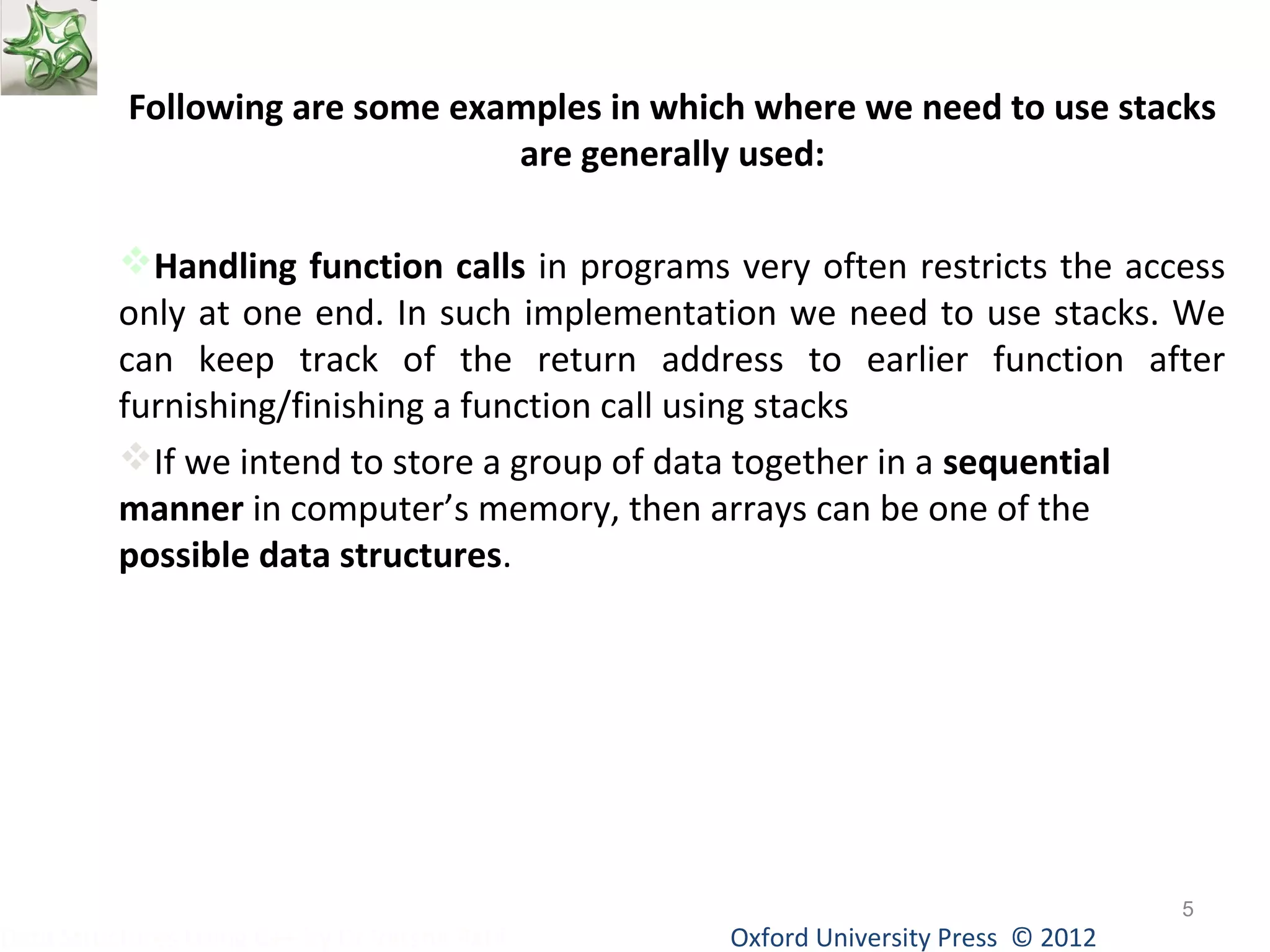
![Arrays
An array is a finite ordered collection of homogeneous data
elements which provides direct access (or random access) to any
of its elements.
An array as a data structure is defined as a set of pairs (index,
value) such that with each index a value is associated.
index — indicates the location of an element in an array.
value - indicates the actual value of that data element.
Declaration of an array in ‘C++’:
int Array_A[20];
Oxford University Data Structures Using C++ by Dr Varsha Patil Press © 2012
6](https://image.slidesharecdn.com/stacks-141027184640-conversion-gate01/75/Stacks-in-algorithems-data-structure-6-2048.jpg)
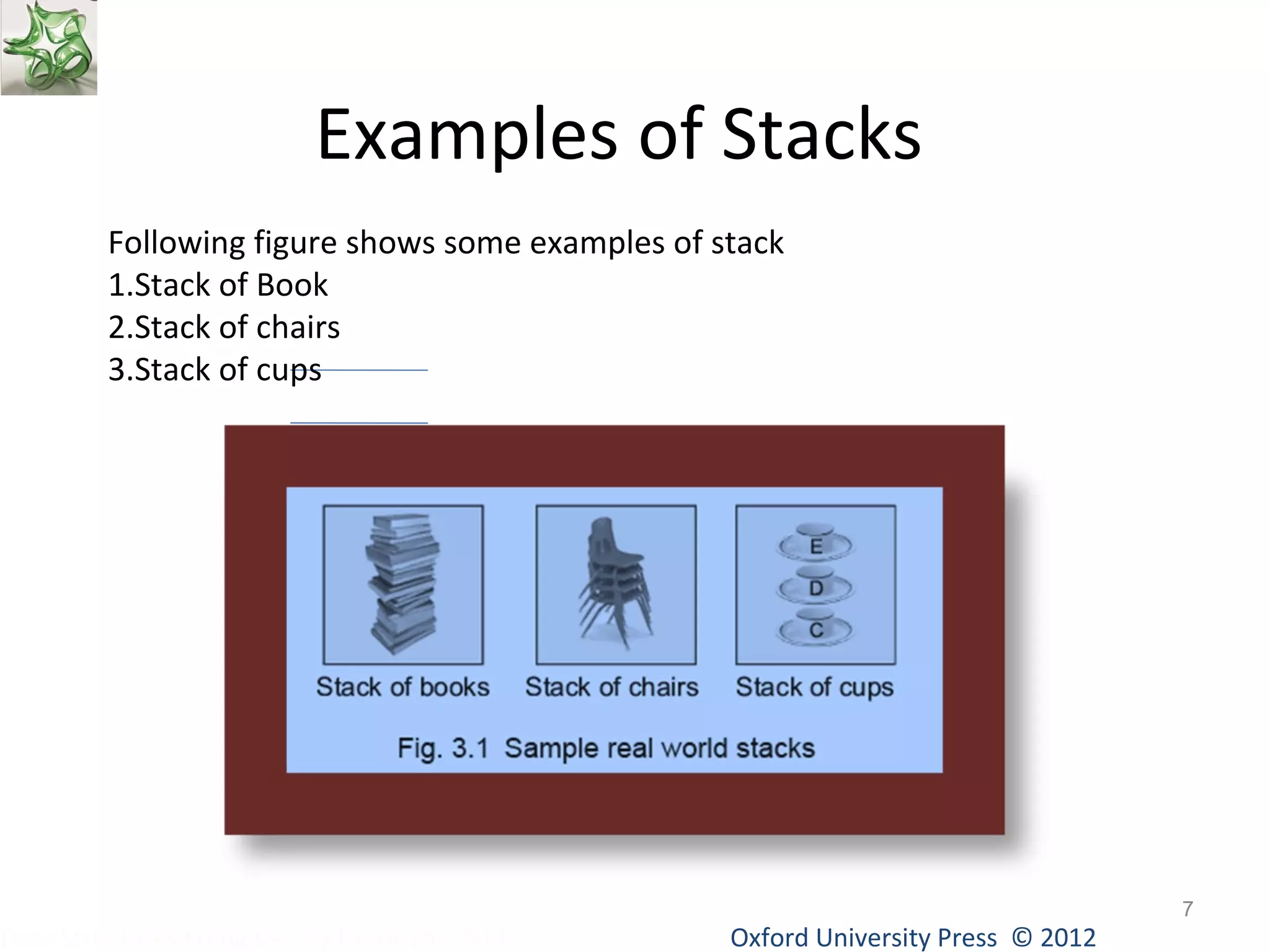
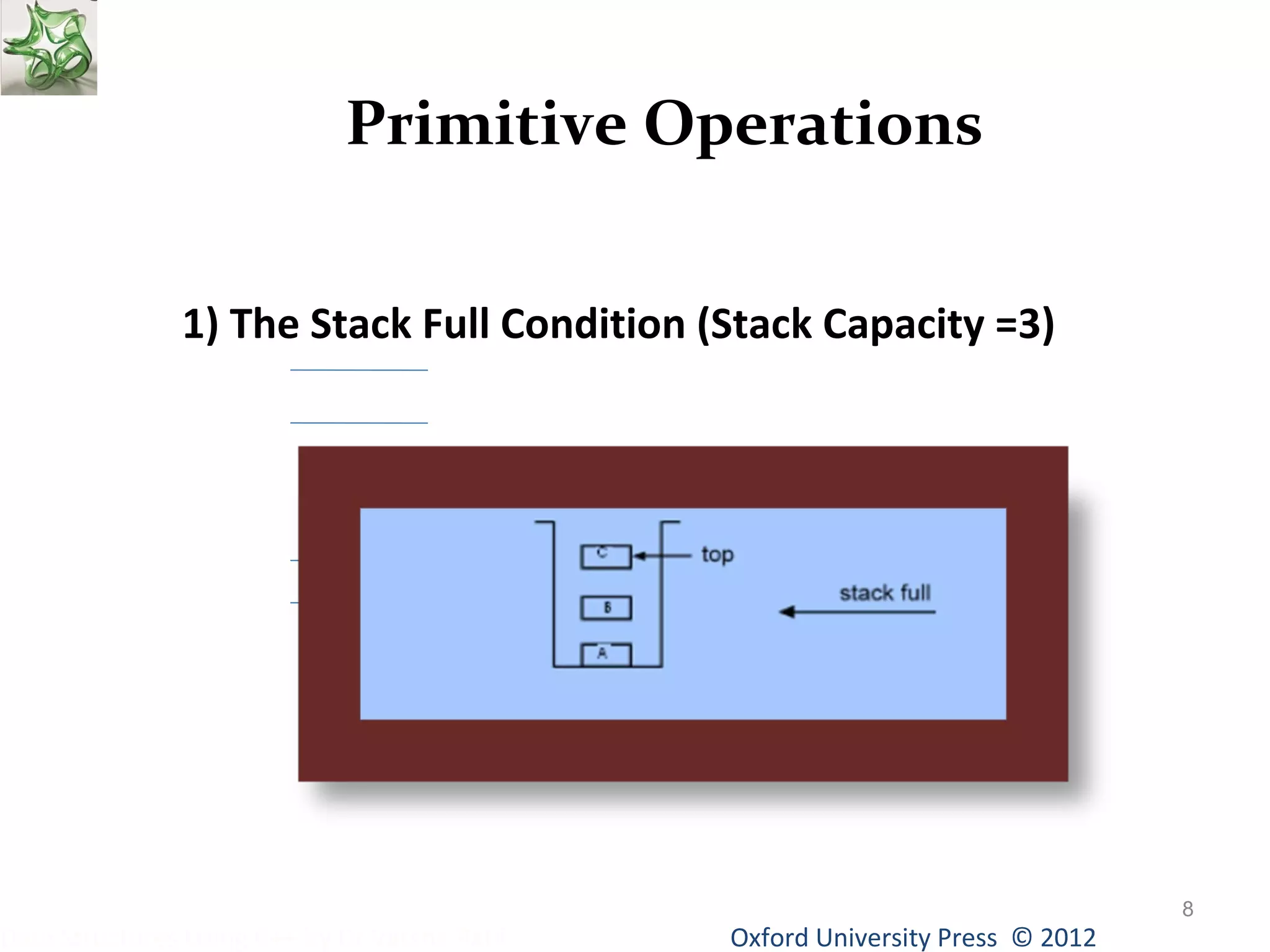
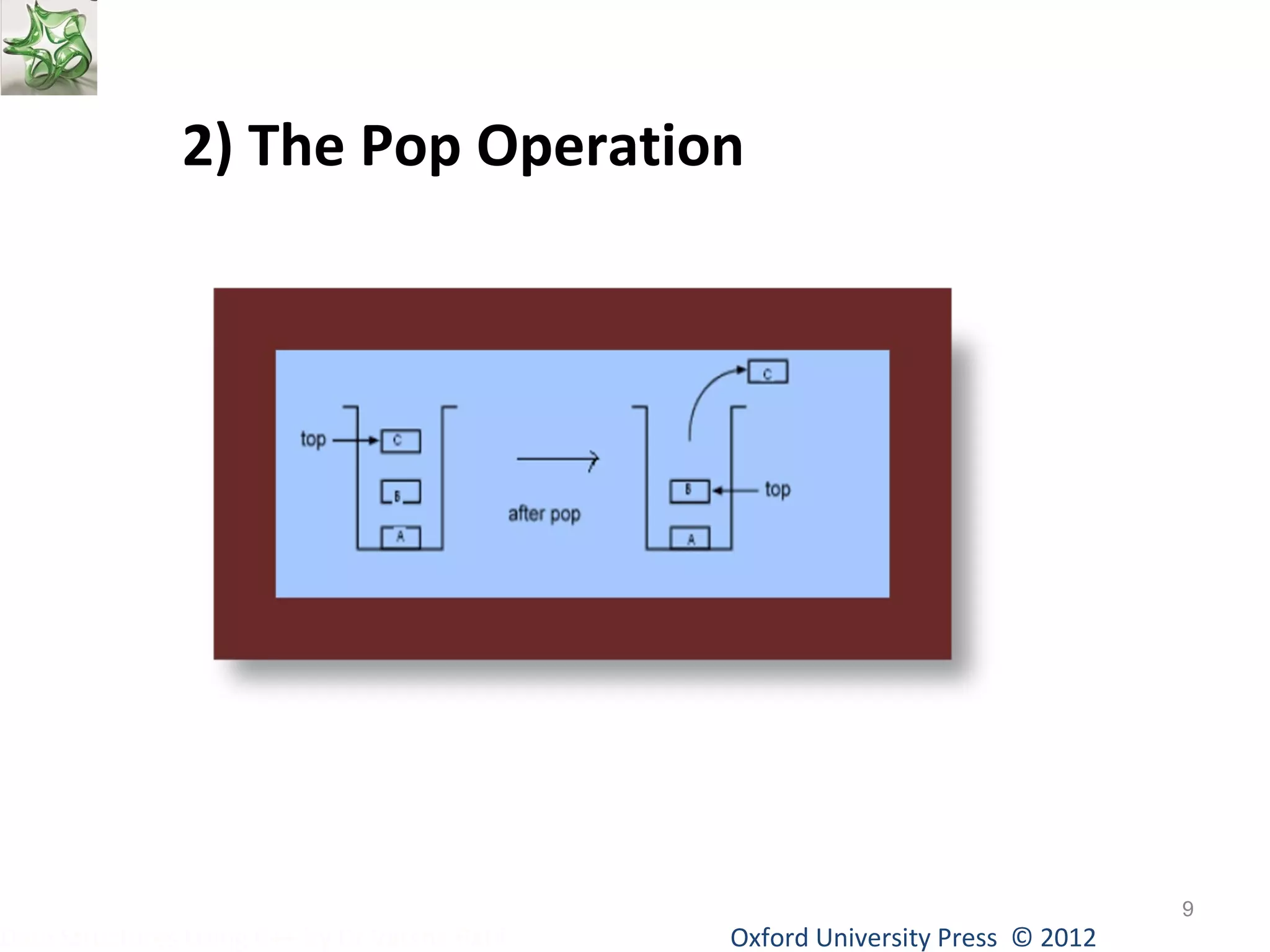
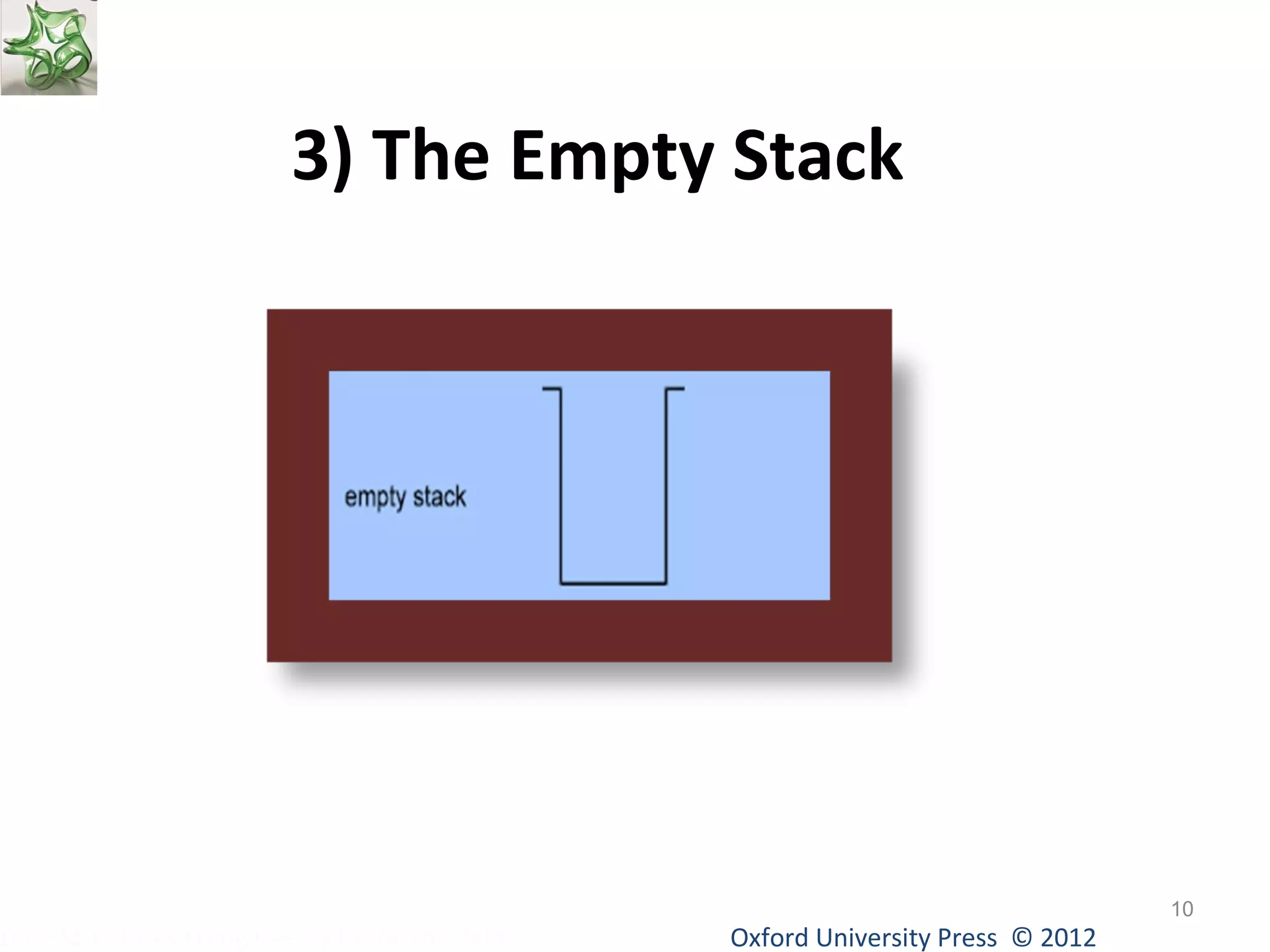
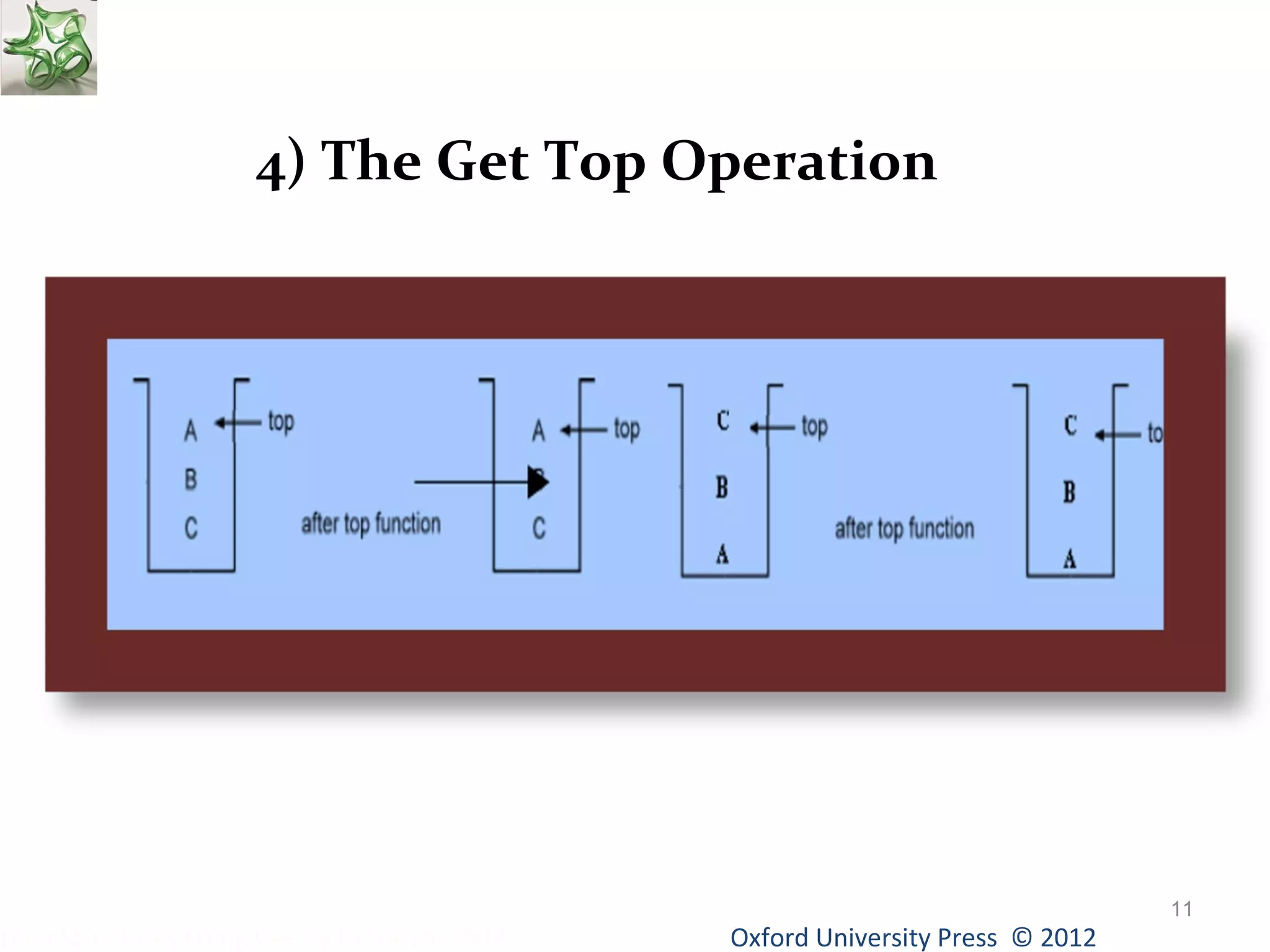
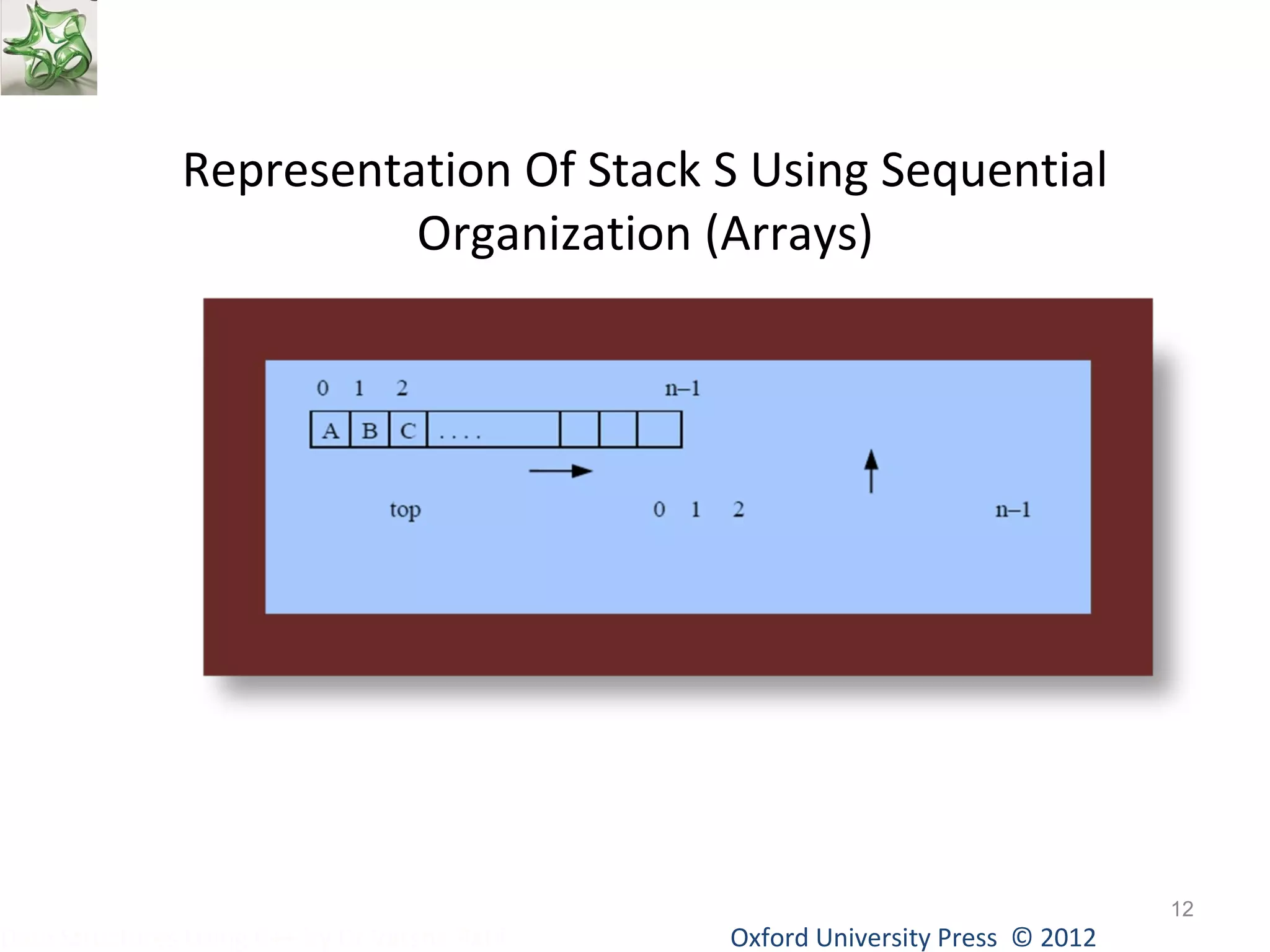
![Oxford University Data Structures Using C++ by Dr Varsha Patil Press © 2012
13
……….. C B A
top
The elements are stored in the stack from the first location onwards
The first element is stored at 0th location of the array ‘Stack’ which means at
STACK[0], the second element at STACK[1], ith element at Stack [i–1], and nth
element at Stack[n–1]
Associated with the array will be an integer variable, top, which points to the top
element in the stack
The initial value of top is −1, when the stack is empty
It can hold elements from index 0 and maximum it can grow up to n−1 as this is the
static stack using arrays](https://image.slidesharecdn.com/stacks-141027184640-conversion-gate01/75/Stacks-in-algorithems-data-structure-13-2048.jpg)
![14
Implementation of Stack
Stack Class
class STACK
{
private:
int Stack[50];
int MaxCapacity;
int top;
public:
STACK( ) { MaxCapacity= 50; top=-1;}
int GetTop( );
int Pop( );
void Push( int Element);
int Empty( );
int CurrSize( );
int IsFull ();
};
Data Structures in C++ by
Dr. Varsha Patil Oxford University Press © 2012 14](https://image.slidesharecdn.com/stacks-141027184640-conversion-gate01/75/Stacks-in-algorithems-data-structure-14-2048.jpg)
![15
Implementation of Stack
GetTop, Pop, Empty
int STACK :: GetTop ()
{
if (!Empty())
return (Stack[top]);
}
int STACK :: Pop ()
{
if (!Empty())
return (Stack[top--]);
}
int STACK :: Empty ()
{
if (top==-1)
return 1;
else
return 0;
}
Data Structures in C++ by
Dr. Varsha Patil Oxford University Press © 2012 15](https://image.slidesharecdn.com/stacks-141027184640-conversion-gate01/75/Stacks-in-algorithems-data-structure-15-2048.jpg)
![16
Implementation of Stack
IsFull, CurrSize, Push
int STACK :: IsFull ()
{
if (top==MaxCapacity-1)
return 1;
else
return 0;
}
int STACK :: CurrSize()
{
return(top+1);
}
void STACK :: Push (int Element)
{
if (!IsFull())
Stack[++top]=Element;
}
Data Structures in C++ by
Dr. Varsha Patil Oxford University Press © 2012 16](https://image.slidesharecdn.com/stacks-141027184640-conversion-gate01/75/Stacks-in-algorithems-data-structure-16-2048.jpg)
